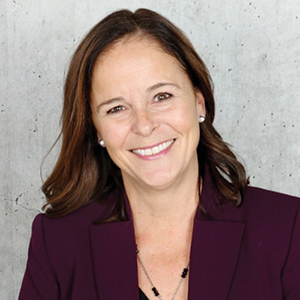New, local health-care meeting reporting requirements add complexity
An epic meeting took place this year. Representatives of the pharmaceutical and hospitality industries came together for the first time to talk strategically about how to deal with a scary new trend in health-care meetings: localized regulations.
In the last 18 months, the most dramatic changes have hit meetings for health-care personnel (HCP) since Physician Payments Sunshine Act (also known as Open Payments) went into effect in the United States in 2010. Although federal laws requiring reporting of any payments to physicians, nurses and researchers—including trips and meals—prevail, states are now passing laws that add additional compliance measures. In California, for instance, no gifts are allowed. That means companies now have to report any “transfer of value” to The Centers for Medicare & Medicaid Services at the federal and state levels.
The newest development is that cities are adding their own layer of reporting. In 2017, Chicago’s Pharmaceutical Representative License program went into effect. Washington, D.C., has its own AccessRX program. Alarm bells sounded recently when a law was proposed in the medical meeting hub of Philadelphia that would have banned pharmaceutical companies from hosting physician meetings in restaurants. That could have been a blow to tourism dollars, as an estimated 100,000 medical meetings happened in restaurants in 2018.
Adding to the challenge of what to report and where are requirements in Europe, as GDPR and other rules about who can receive what kinds of emails vary by country and—possibly soon—by state.
“It is becoming extremely frightening for manufacturers and planners,” said Pat Schaumann, senior director of health-care compliance for Maritz Travel and author of Breaking the Code to Healthcare Compliance. “Changes happen weekly, sometimes daily, and that makes it complicated.”
Many Drivers
The reasons for these policy actions come from a number of different places, according to Schaumann. The first is political. As campaigns include pledges to regulate health care, elected officials at the local, state and federal level—including President Donald Trump—are making strengthening reporting requirements a hot topic.
The opiate epidemic has driven a lot of states to take action by regulating drug manufacturers. Finally, the price of drugs is driving scrutiny of how the industry talks to prescribers.
Industry Reaction
The meetings industry recognizes the importance of addressing these social issues and is ready to work collaboratively to find a solution that enables the important educational and networking benefits of meetings while minimizing even the appearance that drug manufacturers are buying the loyalty of HCPs, Schaumann said.
Thus MPI-MD and the Medical Meetings Standardization Initiative Advocacy Council was born, and the strategic meeting referenced in the opening of this story was called. With 1,000 members, this working group under the Meeting Professionals International umbrella hopes to provide intelligent guidelines for caps on hospitality services. “This counsel will provide experience-based advice on realistic limitations and will play a key role in implementing a strategy that has the potential to result in global consistencies and standardizations,” explained Taya Paige, business development manager at ITA Group. Now for the first time, U.S. planners and European pharmaceutical organizations are coming together to talk about being proactive, Schaumann said. That includes learning about lobbying and sharing information.
One of the more complicated issues to be addressed is the problem of interpretation. Different jurisdictions define things such as “reasonable food and beverage, and room rates” and “business appropriate properties” differently.
“If we could just sit at the same table and standardize this, that would help so much,” Schaumann said.
In the meantime, she says communication is the best defense. Everyone touching an event at a hotel needs to understand the restraints of medical meetings and be clear on who is paying for what, as that determines what is reported.
Perception around medical meetings often overrides everything. “No company wants to be on the front page of the paper because a venue is seen as too luxurious—even if it meets all reporting criteria,” she said.
Schaumann considers planners in the medical meetings to be industry specialists. Myriad laws can result in penalties and violations—even jail time. “This is serious business,” she said.
Event professionals are taking the topic seriously. At this point, 2,100 people in 16 countries have earned their Healthcare Meeting Compliance Certificate (HMCC), an intensive course that includes an understanding of reporting requirements currently in place and gives them access to live, online refresher courses.
Future Trends
Despite challenges with changing regulations and fears about international travel, face-to-face meetings are more popular than ever with physicians. “Virtual meetings are growing a bit,” Schaumann said. They were a big deal five years ago, as a lot of doctors said they don’t want to be away from their patients more than 2 1/2 days. “But doctors like the peer interaction and learning they get from each other through networking, so while hybrid meetings (in-person meetings that are also streamed so those not on site can access the content) are popular, face-to-face is not going away,” she said.
Huge growth in Asia—Singapore in particular—could also impact how meetings are designed. By 2020, Asia will be second-largest pharmaceutical destination in the world, Schaumann predicted. Medical companies are expanding to China and medical meetings are following.
“You have to be well-versed in regulations and the cultural phenomenon of planning in that area of the world,” she warned. While Japan is extremely mature in its compliance regulations, some Asian countries don’t even know what it means yet. “They are all over the place. You have to be very cautious when working in Asia-Pacific,” she said.
Your HCP Resource
Having trouble keeping all the rules straight? My Compliance Wizard can help. This online tool includes all 198 countries—not just the 88 with HCP regulations in place. The free level includes essentials about each country: currency, time zone, calling code and holidays. The subscriber level shows a list of categories that could require reporting or have other limitations—from food and beverage to honorarium. It shows the requirement and includes a link to the regulations. Drill-downs all the way to the state level are updated weekly.
Appeal to the Inner Health-Care Nerd

Doctors and nurses have a lot of experience with education. They know what works and what doesn’t, and they will not waste their time with meetings that are less than great. That is why event professionals have to be on top of their game when designing training programs for this discerning audience.
Jocelyn Cote (pictured), global managing director of strategic meetings management for American Express Meetings and Events, shared these tips with Smart Meetings about how to create meetings that will fill the room with HCPs hungry to learn more.
Get the RSVP
In 2017, HCPs received 1 million hours of instruction worldwide and about 163,000 educational events were held in the United States. With all this choice, event planners have to go the extra mile to ensure their event invitation breaks through the noise—or clutter of inboxes.
- Use easy, interest-peaking subject lines in email invitations (the name of a prominent speaker is always a good choice).
- Keep your invitation short and sweet.
- Be strategic about the time and day an email is sent out (avoid Monday mornings).
- Consider cultural norms surrounding invitations (often, potential attendees in Mexico expect a follow-up phone call after an email invitation is sent).
Deliver the Goods
The good news is that deep down, HCPs actually like education—if it is delivered well. “They just can’t get enough education, and meetings play a vital role in HCP’s career-long quest for learning,” Cote said.
- Provide high-quality speakers who are credible, published and engaging.
- Do your research! Make sure your content is relevant, up-to-date and can be applicable to patients today. Consider including a few sessions on off-beat topics that attendees won’t find in a medical journal.
- Avoid the cardinal sin of allowing your presenters to simply read off slides during a presentation. Instead, make a presentation hands-on, interactive and entertaining.
- Encourage “curbside consults,” where attendees can discuss grey areas of medicine and interact with their peers.
- Encourage use of mobile phones and devices for scheduling, connecting attendees and uploading presentations.




